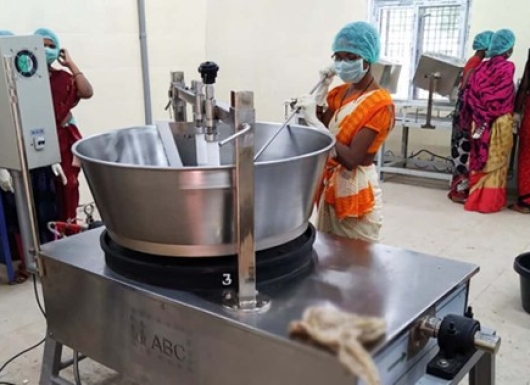Submitter: ICRISAT
The idea is to establish regional seed hubs for strengthening Early Generation Seed (EGS) production, storage, and supply; capacity building; and demand generation, aiming for maximum impact. EGS encompasses breeder seed, pre-basic seed, and basic seed, which are essential for connecting breeding activities to the ultimate production and distribution of improved varieties to farmers. EGS production is essential for ensuring a continuous supply of high-quality seed for crop improvement.
Access to quality seed and other inputs is key to farmers' success in profitable agriculture. Countries like India, both in the public and private sectors, have invested considerably in seed production, processing, storage, and distribution. Likewise, CGIAR institutes, including ICRISAT, IRRI, and ICARDA, have considerable expertise in supporting several governments in scaling up seed production, storage, and distribution.
Replicating this expertise in regions or countries where seed systems are not well-developed can revolutionize agricultural productivity.
This initiative, therefore, focuses on building a robust and sustainable seed system in partner countries to improve farmers' access to high-quality seeds of climate-resilient crop varieties. It addresses the challenges of fragmented production, inconsistent early-generation seed supply, weak local seed enterprises, and low farmer demand for improved varieties.

Benefits
Tools
Value added
India's centrally coordinated breeder seed production and supply system provides a valuable blueprint in the absence of a robust mechanism in other African regions or elsewhere. The immediate target would be dryland and semi-arid regions with smallholder farmers relying on staple crops like sorghum, millets, cowpea, chickpea, groundnut, pigeonpea, lentil and cereals like durum wheat and barley and direct seeded rice, with the challenges they often experience with limited access to quality seeds of adapted varieties, reliance on saved seeds, and weak market linkages.
India has a centrally coordinated system for breeder seed production and supply, where organizations (both public and private) forecast their seed requirements a year in advance, allowing for the planned production of early-generation seeds (breeder and foundation seed) by designated agricultural research institutions and seed farms.
This system emphasizes quality control and the transparent allocation of EGS to various seed producers, ensuring a consistent and predictable availability of high-quality breeders and foundation seed for climate-resilient crops. This enables more accurate forecasting of seed demand and production, thereby reducing shortages and surpluses. Apart from improving seed quality through centralized oversight and quality control measures, it also helps streamline the process from breeding to the availability of basic seed for multiplication, contributing to a more organized and efficient seed industry that benefits both seed producers and farmers.
This centrally coordinated EGS model, inspired by India, offers a scalable and adaptable solution for African regions by leveraging existing infrastructure and allowing for phased implementation tailored to specific crops and regions. Its focus on optimized resource use and streamlined processes contributes to a low-cost approach. The model fosters partner readiness by clearly defining roles for research institutions, seed enterprises, extension services, and regulatory bodies, thereby attracting investment and private sector engagement.
Beyond initial support, the model can generate resources for its sustenance through Cost Recovery on EGS by strategically pricing breeder and foundation seed to recover production and operational costs, reinvesting surpluses, Capacity Building Fees by charging modest fees for training programs offered by the regional hubs to seed producers and other stakeholders, Quality Assurance Services by generating revenue through fees for seed testing and certification services provided by the hubs, Partnerships and Grants by leveraging successful outcomes and established infrastructure to attract further funding from government agencies, international donors, and philanthropic organizations and Royalties/Licensing for high-demand hybrids exploring sustainable royalty or licensing agreements.